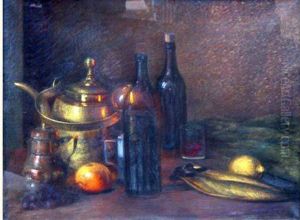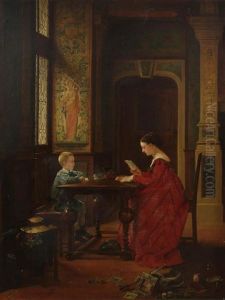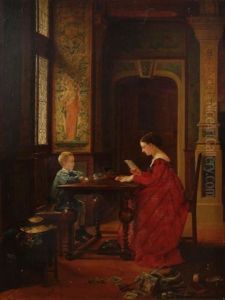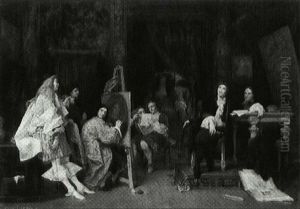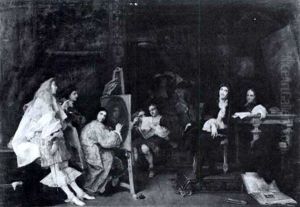Jacques Edmond Leman Paintings
Jacques Edmond Leman was a 19th-century French painter and sculptor known for his classical style and academic art. Born in 1829, Leman honed his artistic skills at the Ecole des Beaux-Arts in Paris, which was the hub for art education in France during that period. Under the tutelage of prominent artists of the time, Leman developed a strong foundation in the traditional methods of painting and sculpture that were highly valued in the conservative circles of French art.
During his career, Leman participated in the prestigious Paris Salon, an annual art exhibition that was the official art exhibition of the Académie des Beaux-Arts in Paris. It was at these exhibitions that artists gained recognition and patronage. His works primarily involved religious and mythological themes, which were popular subjects in the 19th century, reflecting the values and tastes of the French bourgeoisie and the academic art establishment.
Leman's painting style was characterized by its fine detail, classical composition, and a preference for idealized beauty, following the tradition of the French Academy. His sculptures also echoed a similar classical influence, often depicting figures from mythology or historical narratives with an emphasis on proportion, harmony, and polished execution.
Despite his adherence to the academic style, Leman's work was produced during a time of significant change in the art world. The latter half of the 19th century saw the rise of movements such as Impressionism and Post-Impressionism, which challenged the academic norms and explored new techniques and subject matter. While Leman may not have been at the forefront of these avant-garde movements, his works still contributed to the rich tapestry of French art history by embodying the values of the academy.
Jacques Edmond Leman passed away in 1889, leaving behind a legacy as a skilled practitioner of academic art. Though he may not be as widely recognized today as some of his contemporaries who embraced more revolutionary approaches to art, his contributions reflect the era's artistic tastes and the high level of craftsmanship that was expected of artists in the academy during his lifetime.
